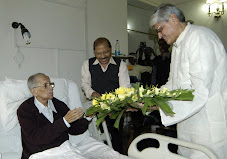---------- Forwarded message ----------
From:
Diabetes Clinical Mastery Series <diabetes@topica.email-publisher.com> Date: Tue, Sep 11, 2012 at 2:00 PM
Subject: Mastery in Minutes Video Series: Dr. Martha Funnell on Changing Patient Behavior
To:
palashbiswaskl@gmail.com ![]() |
![]() | To ensure that you never miss an issue, please whitelist us. | ![]() | ![]() | ![]() | ![]() | ![]() | ![]() | | Medical Insights to Improve Outcomes | | | ![]() | | | ![]() | ![]() | | September 11, 2012: Issue #DCMS-101 (Recommend Us) | ![]() | | CLINICAL GEMS — The Best from Diabetes Texts | | | ![]() | | DISASTERS AVERTED — Near Miss Case Studies | | | ![]() | | HOMERUN SLIDES — Great Clinical Presentation Highlights | | | ![]() | | MASTERY IN MINUTES — Candid Video Interviews with Top Practitioners | | | ![]() | | TOP SHARED ARTICLES OF THE MONTH | | | ![]() | ![]() | ![]() | ![]() | ![]() | | Editor's Note | ![]() | | I did a program in Nashville this past weekend for a group of pharmacists on medical errors. One of the slides shows that when it comes to medication-related errors, the ISMP, IHI and Joint Commission all agree that insulin is the most error-prone drug, and that its improper use can cause both hypo- and hyper-glycemia. It is the medication most often responsible for Emergency Room visits. In another kind of medication error, our Disaster Averted this week looks at what happen when patients try to figure out their own dosing of GLp-1 analogs. Our Homerun Slides compare current weight reduction methods, including Medication, Behavior
Modification, and Meal Replacements, and the results of using them together while the Clinical Text this week is Part 2 of "Diabetic Ketoacidosis in Adults," excerpted from Diabetic Emergencies - Diagnosis and Clinical Management. Be sure to check out our new video section, Mastery in Minutes. I would recommend you take a look at Martha Funnell's video on nutrition and physical activity behaviors.
| Your partner in diabetes care,
Dave Joffe
Editor-in-chief | ![]() | | ![]() | ![]() | ![]() | | ![]() | | CLINICAL GEMS — The Best from Diabetes Texts | ![]() | | Diabetic Emergencies - Diagnosis and Clinical Management: Diabetic Ketoacidosis in Adults, Part 2 | ![]() | | Hyperglycemia
Hyperglycemia in DKA is the result of reduced glucose uptake and utilization from the liver, muscle, and fat tissue and increased gluconeogenesis as well as glycogenolysis. The lack of insulin results in an increase in gluconeogenesis, primarily in the liver but also in the kidney, and increased glycogenolysis in liver and muscle.8,9 In addition, the inhibitory effect of insulin on glucagon secretion is abolished and plasma glucagon levels increase. The increase of glucagon aggravates hyperglycemia by enhancing gluconeogenesis and glycogenolysis. In parallel, the increased concentrations of the other counter - regulatory hormones enhance further gluconeogenesis. In addition to increased gluconeogenesis, in DKA there is excess production of substances which are used as a substrate for endogenous glucose production. Thus, the amino acids glutamine and alanine increase because of enhanced proteolysis and reduced protein synthesis.8,9....Full Story | | | ![]() | | DISASTERS AVERTED — Near Miss Case Studies | ![]() | | Why Patient Demo's Are Important | ![]() | | Recently, I met with a patient on Byetta 5mcg with a prescription for 10mcg as her continuation dose by a physician in the practice I work in. She had been given a sample pen of Byetta 5 mcg and instructed on the use of the pen by the physician's medical assistant. The patient called in requesting a refill prescription of the Byetta 10mcg in about two weeks. The MA of the physician who had started the patient on the drug called in the refill. About two weeks later the patient called in again for another refill, reporting that she was nauseous, not eating much but losing weight which she was happy about. This time I received the request for refill because the physician was not available. After reviewing the patient's chart and Byetta refill history I gave the patient a call to find out why she needed the refills so often when one pen should last up to a month....Full Story | | | ![]() | | HOMERUN SLIDES — Great Clinical Presentation Highlights | ![]() | | Leveraging Weight Loss in the Treatment of Type 2 Diabetes, Part 3 of 4 | ![]() | | In this week's set of Homerun Slides, we explore how to approach treatment-induced wight gain and some of the medications that can help Type 2 diabetes patients control their weight while maintaining cardiovascular health....Full Story | | | ![]() | | MASTERY IN MINUTES — Candid Video Interviews with Top Practitioners | ![]() | | Martha Funnell Q3 Changing Nutrition and Physical Activity Behaviors | ![]() | | Dr. Funnell reviews some of the strategies she uses in helping patients change: meeting the patient where they are; identifying what foods are important to them especially culturally; and identifying what changes might be easy. She also discusses how group meetings can be helpful as patients exchange ideas and support each other.... Full Story | | | ![]() | | TOP SHARED ARTICLES OF THE MONTH | ![]() | | #1: Diabetic Emergencies - Diagnosis and Clinical Management: Diabetic Ketoacidosis in Adults | ![]() | | ![Diabetic_Emergencies]()
Diabetic ketoacidosis (DKA) is an acute complication of diabetes mellitus. It is characterized by the triad of hyperglycemia, ketosis, and metabolic acidosis.1Full Story | | ![]() | | #2: Joslin's Diabetes Deskbook, Updated 2nd Ed.: The How's and Why's of Medical Nutrition Therapy, Part 2 | ![]() | | Amy P. Campbell, MS, RD, CDE, and Richard S. Beaser, M.D.
![Joslin_Diabetes_Deskbook]()
The week's excerpt answers the following questions - Does using the "glycemic index" work?
- Is the type of carbohydrate important?
- Carbohydrate counting vs. the glycemic index and glycemic load
- How much carbohydrate do we really need?
- What percentage of consumed carbohydrates are converted to glucose?
- What is the caloric range for weight loss and recommended level for weight maintenance?
- Does insulin may you fat?
Full Story | | ![]() | | #3: Exercise and Sport in Diabetes, 2nd Ed, Part 7: Adjusting Insulin Dosing for Physical Activity | ![]() | | 2.9 Insulin Dose Adjustment ![Exercise_and_Sport_In_Diabetes]()
The following is an excerpt that answers questions regarding the insulin dosing for exercise. Full Story | | | ![]() | | ![]() | | | ![]() | ![]() | ![]() ![]() ![]() | | Diabetes In Control has over 11500 studies & articles in our archives. | ![]() | | This newsletter is not associated with the American Diabetes Association | ![]() | | ![]() | | ![]() | | | ![]() | ![]() | ![]() | Copyright 1999-2012 Diabetes In Control | ![]() | ![]() | | ![]() | | |
![]()





































Minirin 0.1 mg Tablets contain desmopressin, a manufactured simple of arginine vasopressin, the regular antidiuretic chemical that is utilized to treat conditions described by polyuria to lessen pee creation.
ReplyDelete